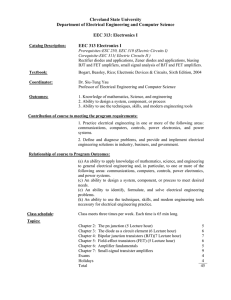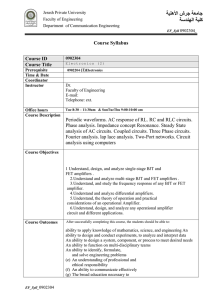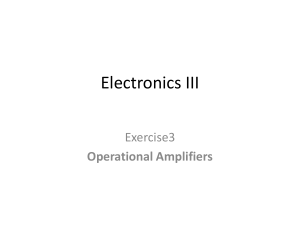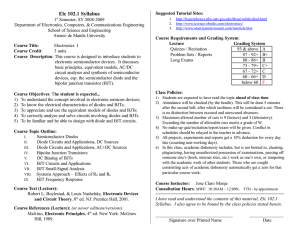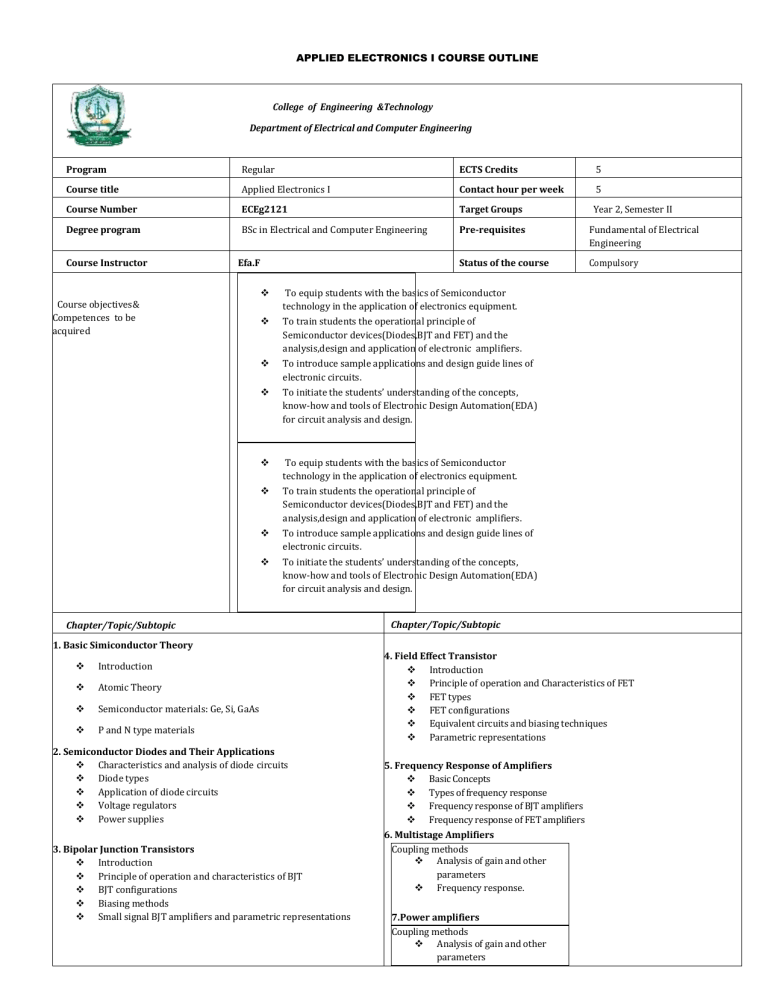
APPLIED ELECTRONICS I COURSE OUTLINE College of Engineering &Technology Department of Electrical and Computer Engineering Program Regular ECTS Credits 5 Course title Applied Electronics I Contact hour per week 5 Course Number ECEg2121 Target Groups Year 2, Semester II Degree program BSc in Electrical and Computer Engineering Pre-requisites Fundamental of Electrical Engineering Status of the course Compulsory Course Instructor Efa.F Course objectives& Competences to be acquired To equip students with the basics of Semiconductor technology in the application of electronics equipment. To train students the operational principle of Semiconductor devices(Diodes,BJT and FET) and the analysis,design and application of electronic amplifiers. To introduce sample applications and design guide lines of electronic circuits. To initiate the students’ understanding of the concepts, know-how and tools of Electronic Design Automation(EDA) for circuit analysis and design. To equip students with the basics of Semiconductor technology in the application of electronics equipment. To train students the operational principle of Semiconductor devices(Diodes,BJT and FET) and the analysis,design and application of electronic amplifiers. To introduce sample applications and design guide lines of electronic circuits. To initiate the students’ understanding of the concepts, know-how and tools of Electronic Design Automation(EDA) for circuit analysis and design. Chapter/Topic/Subtopic 1. Basic Simiconductor Theory Introduction Atomic Theory Semiconductor materials: Ge, Si, GaAs P and N type materials 2. Semiconductor Diodes and Their Applications Characteristics and analysis of diode circuits Diode types Application of diode circuits Voltage regulators Power supplies 3. Bipolar Junction Transistors Introduction Principle of operation and characteristics of BJT BJT configurations Biasing methods Small signal BJT amplifiers and parametric representations Chapter/Topic/Subtopic 4. Field Effect Transistor Introduction Principle of operation and Characteristics of FET FET types FET configurations Equivalent circuits and biasing techniques Parametric representations 5. Frequency Response of Amplifiers Basic Concepts Types of frequency response Frequency response of BJT amplifiers Frequency response of FET amplifiers 6. Multistage Amplifiers Coupling methods Analysis of gain and other parameters Frequency response. 7.Power amplifiers Coupling methods Analysis of gain and other parameters Frequency response. 7.Power amplifiers Teaching & Learning Methods Lectures supported by tutorials,assignment and laboratory exercises. Assessment Methods Assignments(10%), Quizzes(10%) Mid-Exam(30%) and Final Examination(50%) NB: Astudent must attend at least 75% of the classes References [1] Behza Razavi, FundamentalFundamentalofof Microelectronics, 2nd edition,Wiley,2014 [2] Boyelstad R.and Nashelsky L.,Electronic DevicesandCircuit Theory, 9th Edition,pearson,Education,2009 [3] Thomas L.Floyd,Electronic Devices,9th Edition,Pearson Education,2014 [4] Sedra A.S.and Smith K.C. Microelectronic Circuits,6th Edition,Oxford University Press,2010 [5] Millman J.and Grabel A.,Microelectronics,2nd Edition,McGraw Hill,2001 [6] Bogart T.F.BeasleyJ.S.,and RicoG.,Electronic Devices and Circuits,6th Edition,
